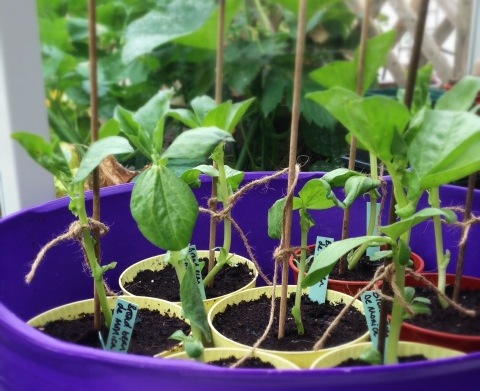A gorgeous little pink orchid that, as its name suggests, looks as though a bee has landed on its petals for a quick snack. Usually found on dry, grassy slopes with poor soil, they can also be spotted on roadsides and industrial estates.
Keep a look out in shady woodland areas where bluebells have finished flowering, and on rural roadside verges to catch a glimpse of this pretty deep pink flower. Known as ‘Bachelor’s buttons’, it is thought it used to be worn as a buttonhole by unmarried men.
3. Sea Campion, Silene uniflora
The perfect plant to track down on coastal walks, you’ll spot this white-flowered, waxy-leaved plant on cliffs, shingles and sand dunes from May to July.
4. Birds Foot Trefoil, Lotus corniculatus
A member of the pea family, this low-growing plant has the best collection of common names, which include ‘Granny’s Toenails’, ‘Eggs and Bacon’ and ‘Hens and Chickens’. Whatever you call it, you’ll find it in grassy spots like lawns, verges and heathlands.
5. Cow Parsley, Anthriscus sylvestris
These frothy white umbellifers are ubiquitous on country verges in summer. Also called wild chervil, this is an edible herb, but be careful when foraging for it as it looks much like many other umbellifers that are poisonous, like Fool’s Parsley and worse, Hemlock. Perhaps play it safe side and pick bunches of it to fill vases instead.
6. Ox-eye Daisy, Leucanthemum vulgar
These large flowers used to be commonly found in traditional hay meadows, gently swaying in the breeze. You’re most likely to spot them now along the edges of fields that are managed as wild meadows, grasslands and on roadsides. Also called ‘Moonflowers’, they glow as night falls.
Last chance saloon if you fancy a bit of foraging for your supper. Wild garlic makes a delicious pesto and is delectable in an omelette! Ancient woodlands are the best place to find it – look out for a cluster of white flowers atop a tall stem and strap-like leaves. Check for the garlic scent as the leaves can be mistaken for Lily of the valley, which is poisonous.
8. Black Horehound, Ballota nigra
Growing in hedgerows, fields, along paths and in wasteland since the Iron age, this perennial herb grows up to a metre tall, so should be easy to spot. Clusters of flowers are loved by bees and sit atop sepals that fuse and form a tunnel.
9. Sainfoin, Onobrychis viciifolia
A beautiful pyramid-shaped perennial herb that looks a bit like a glammed-up lupin. Widely grown as a fodder crop until the 1800’s, you’re most likely to find it in a sunny spot on grassy banks or undisturbed chalk grassland.
10. Goat’s-rue, Galega officinalis
A mini lavender-coloured sweet pea-type flower which you’re likely to see growing amongst shrubs in dappled shade on light, sandy soils, as their delicate frame benefits from the support.
Words: Cinead McTernan
Turn to page 70 of June's The Simple Things for an extract from Meadowland by John Lewis-Stempel (Black Swan, £8.99), which won the 2015 Thwaites Wainwright Prize (see page 81 for the full shortlist).
Turn to page 74 for Tania Pascoe's picks of wild flower meadows to visit. Tania Pascoe is the author of Wild Garden Weekends.






